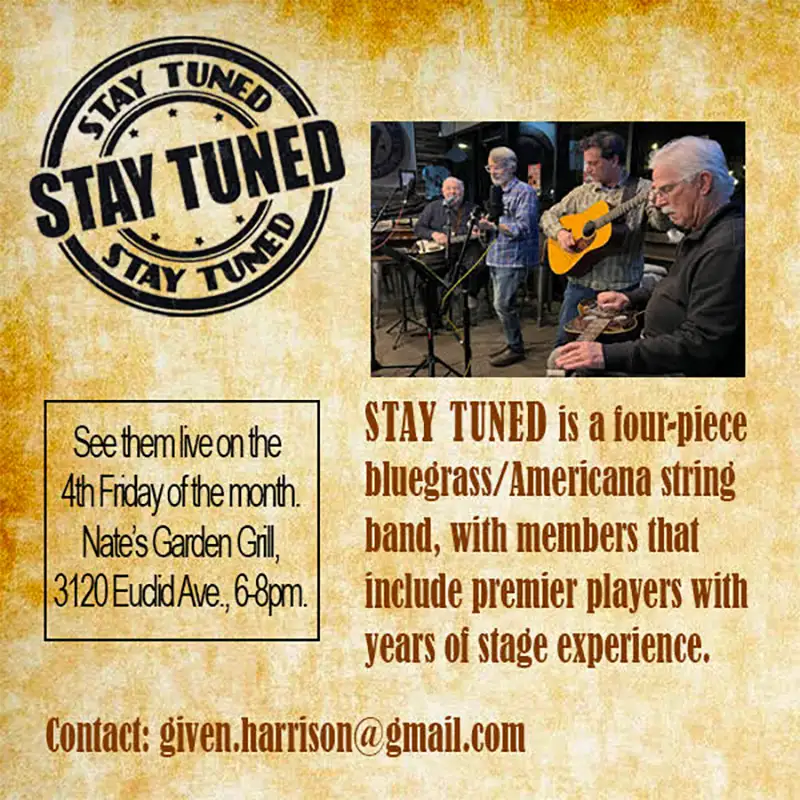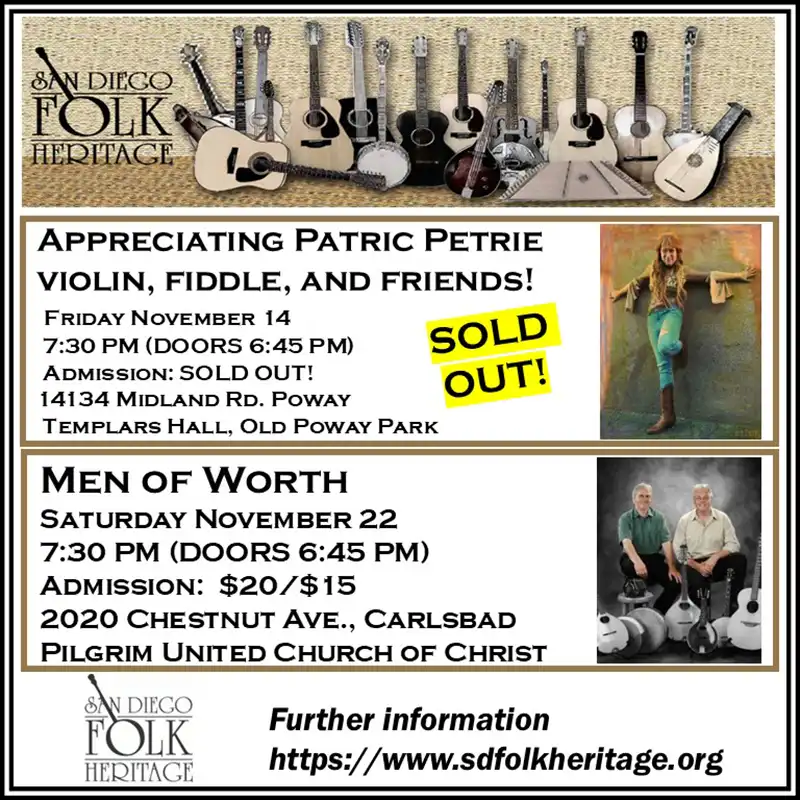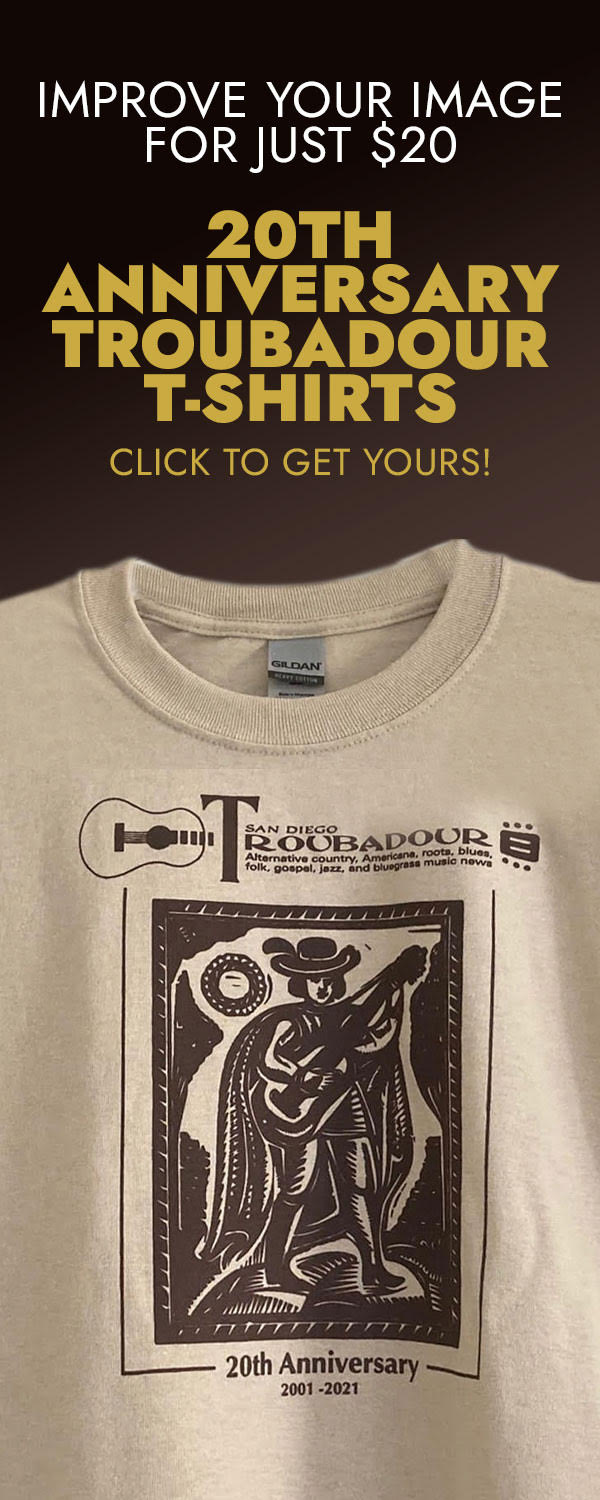Ask Charlie...
Thunderstruck
Hello Troubadourians! It is with much sadness that I have to write that one more of our generation’s guitar heroes is gone. As I started to compose this month’s column, I received the news that Malcolm Young had died at age 64. While every death is sad, his was made a little sadder in that it had been a long time coming. Young had suffered from dementia beginning in 2014, which prevented him from playing and touring with AC/DC, the band that he had founded with his brother Angus in 1972. If you want a biography of Malcolm Young and AC/DC, there are other sources for that. As I did with my column on Tom Petty last month, I’ll simply have to write about how Young and AC/DC influenced me and my playing. That’s the best I can do.
If you were a guitar player in the ’70s, you were inevitability influenced by AC/DC and by Malcolm Young. Angus got most of the accolades in the guitar press and was the most visible member of the band, but it was Mal’s rhythm guitar that defined the sound of the band and gave it the drive that we most associate with AC/DC. So many of their best songs start with Mal’s rhythm guitar pounding out the groove. He’d start playing and just lock in and wait for the rest of the band to join in as if he were saying, “All right, lads, here’s the groove. I’ll just keep playing it until the lot of you get it together.” So much power and authority in his playing, he literally defined how hard rock rhythm guitar was to be played. Almost never straying from first position chords and using a heavier set of strings that normally use by rock guitarists, Malcolm pummeled his Gretsch guitar into rock and roll history.
There was a lot that he did differently than everybody else that a lot of us would consider “wrong” for playing rock music. As I mentioned above, he used heavy strings with a wound third string, much like an acoustic guitar set. To be precise, he used heavy-gauge Gibson nickel round-wound strings gauged .012-.056. I remember reading in an interview with him in some guitar magazine that used heavier strings because he was only going to be playing rhythm so he didn’t need a light set because he wasn’t going to be bending strings or soloing. This meant that he could get a fuller, more solid rhythm sound and also stay in tune.
His guitar of choice was also unique. Young played a Red 1963 Gretsch double-cutaway Jet Firebird guitar handed down to him by Harry Vanda and elder brother George; he called this guitar “The Beast.” Early videos and pictures of the band show the guitar with three pickups–the original Filtertrons in the neck and bridge positions and a middle humbucker that had been added by Young. Later, he removed the neck and middle pickups leaving only the stock Gretsch Filtertron in the bridge position. Malcolm favored Marshall amps on stage, usually two original Marshall 100-watt heads, one 1966 JTM45/100 and one late Superbass from the late 1960s or early 1970s. Each head powers two 4×12 cabinets. The thing about his tone was that it wasn’t all that distorted or “dirty.” Sure, there was an edge and some breakup in his tone but it was far from saturated or even really all that overdriven. So many guitarists seeking to get the AC/DC sound use way too much distortion. This is a common problem with guitarists–they hear a little breakup as full-on distortion and end up getting a mushy, indistinct tone. Restraint with distortion was one of the big things I learned from Malcolm.
As I mentioned last month, I was more into the Eagles and the country rock scene during the ’70s and early ’80s (a fact that my ex-wife loved to remind me of as if I wasn’t a real rocker), but I listened to everything with a guitar in it so that I could know and hear as much as I could about how guitarists were using their gear and what tones they used and liked. I guess I was a gear geek even in the beginning. I think of all of the things that sounded cool to my ears but was the most difficult to achieve in a controlled way (read as “low volume”) was that edge of breakup sound that Malcolm got. Chuck Berry, Brian Setzer, Ed King, Joe Walsh, Danny Gatton, and even Pete Townshend were all masters at getting that tone, but I’m sure all of them were playing much louder than I was allowed to play. Capturing that elusive sound had been a pursuit that has encompassed my entire guitar-playing experience. Picture it as a big, loud acoustic guitar and you’ll get the idea. Much easier to think of than it is to get with any sort of control over your volume; the biggest misconception is that you have to use the gear these guys use to get the same tone. Anyone who has plugged into a 100-watt Marshall and a 4×12 cabinet and turned it up until it just starts to break up knows that it’s too loud to use anywhere other than an arena gig or in the confines of the studio. Of course, this is precisely where Malcom and the band plied their trade, so it made perfect sense that his was the gear he used. While I knew from the first listen that Malcolm and AC/DC had “the tone,” it’s taken me until recently to achieve the same at reasonable volumes. Now, it’s a Fender Princeton and a FlyRig5 that gets me every tone I can ever imagine and at levels useable from PA-less rehearsals to on stage with drums. Why did I ever think that I needed 130 watts when I can do so much now with 12? Well, PAs are better now and so am I…
While we haven’t been able to witness Malcolm’s playing in person for the past three years, it still hurts to know that now we’ll never be able to hear that unique power again. Listening to the records and CDs will have to suffice. I know that some of that power seeped into my rhythm playing. Likewise, realizing that restraint with distortion is the key to that power has helped all of my playing. Mal, you are and have been missed. Keep on rocking, big brother. Heaven needs a kick in the ass.
Need to know? Just ask… Charlie (ask.charlie@hotmail.com)








